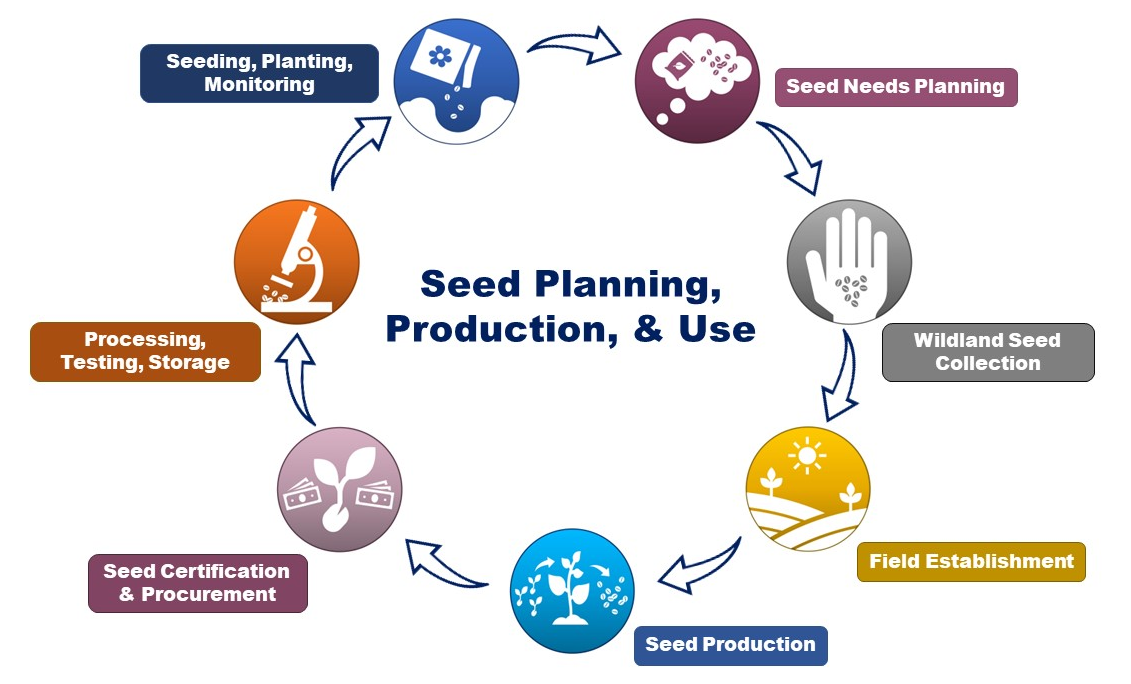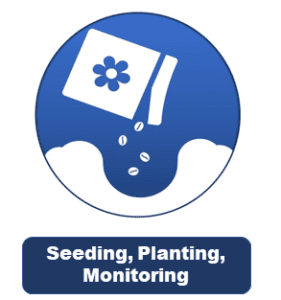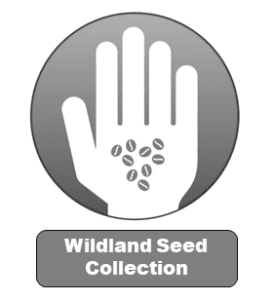
The Climate-Smart Restoration Tool is a GIS mapping program designed to help natural resource managers match seedlots with planting sites based on climatic information.
The Western Forbs: Biology, Ecology, and Use in Restoration project is designed to aid seed collectors, seed growers, nurserymen, landowners, restoration practitioners, and land managers as they increase the supply and use of native forbs.
Implementation of the SEEDS experimental restoration framework can move management options toward strategic treatments that increase project success, reduce the need for repeated treatments, and reduce costs. We will restore functional and resilient Great Basin ecosystems through, 1) experiments using local management and researcher knowledge, 2) monitoring a suite of integrated ecosystem processes, 3) determining…
Given the low migration rates and long divergence times between some pairs of P. spicata populations, using commercial germplasm sources could facilitate undesirable restoration outcomes when used in certain geographic areas, even if the environment in which the commercial materials thrive is similar to that of the restoration site. As such, population structure and history…
This study measured the detailed phenologies of 27 bluebunch wheatgrass (Pseudoroegneria spicata) populations from six seed transfer zones (STZs) raised in a common garden to test whether existing STZs created using a combination of plant morphology and “first-day” phenological measurements adequately capture population-level variation in season-long, detailed phenologies. The number of individual plants within an…
The efficacy of seed transfer zones in predicting the climatic match of seed sources to restoration sites has not been tested in non-tree species. Seed zones for bluebunch (Pseudoroegneria spicata) wheatgrass demarcate areas with similar climate and populations with climate-associated genetic variation. To examine if populations are locally or regionally adapted requires comparing performance of…
In this study, we characterize adaptive genetic variation in bottlebrush squirreltail (Elymus elymoides), a short-lived, self-pollinating, perennial bunchgrass of restoration importance, found in semi-arid regions of western North America, across a core section of its range in the northern Great Basin and Intermountain West region. Findings – Squirreltail trait × environment relationships follow similar patterns…
This study used data from an earlier experiment set up following a wildfire that burned across the Tintic Valley, UT, in 1999. Four different seed mixes, plus a non-seeded control, had been applied in landscape-scale replicates. Two ‘conventional’ mixes contained commonly seeded non-native (Eurasian) species such as crested wheatgrass, and the other two mixes were…
From 2017 to 2021 the RMRS Boise lab coordinated the collection of forb seed and tissue for research purposes from across the Columbia, Snake and Great Basins. The species collected include Agastache urticifolia, Balsamorhiza sagittata, Chaenactis douglasii, Crepis acuminata, Erigeron pumilus, Erigeron speciosus, Machaeranthera (Dieteria) canescens, Phacelia hastata, Sphaeralcea grossulariifolia, Sphaeralcea munroana, and Sphaeralcea parvifolia. Table 1.Number of research seed collections by species and agency from 2017-2021.…




